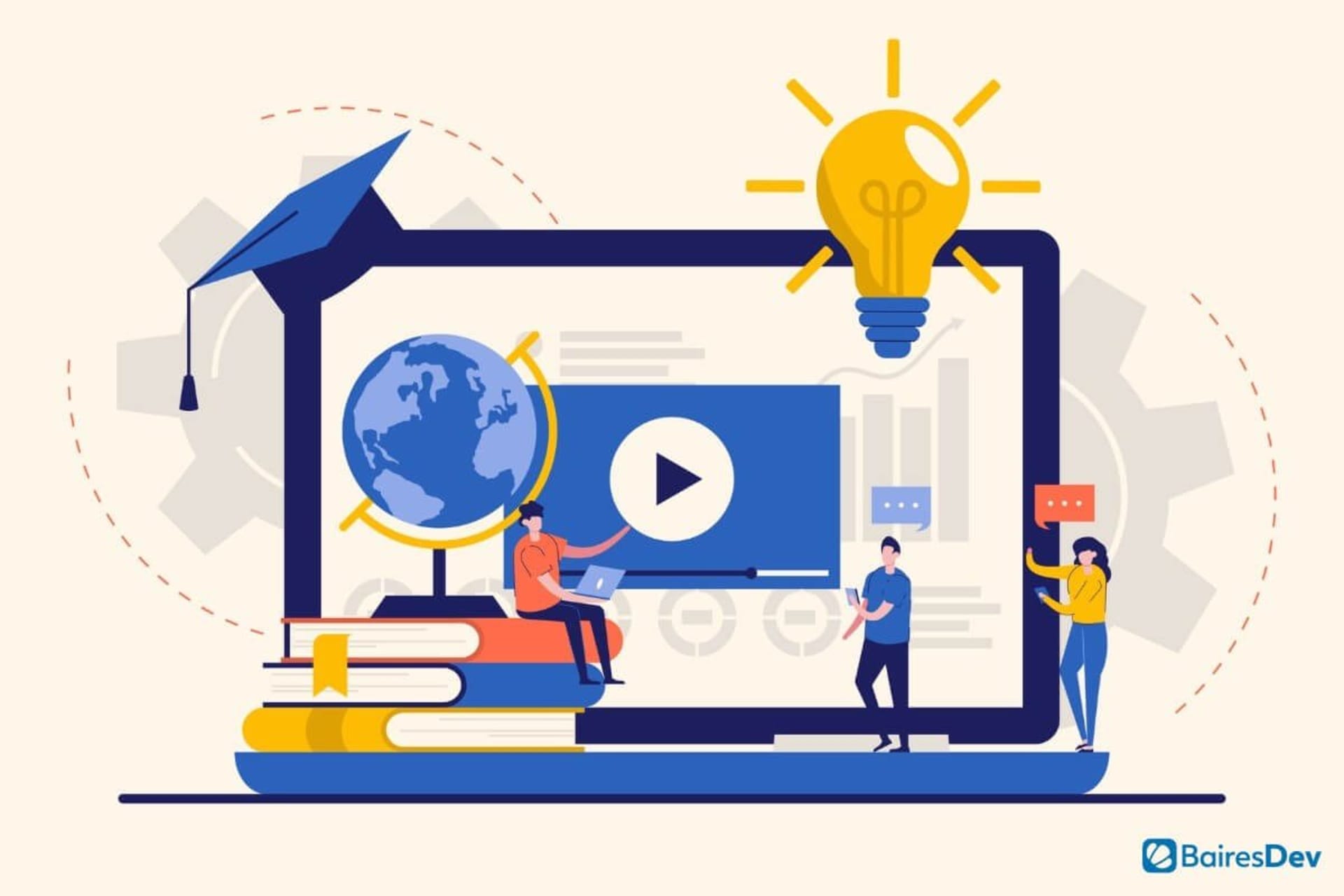Prior to the COVID-19 pandemic, investment in education technology was strong and growing rapidly. In 2019, the market had reached 18.66 billion USD and was projected to reach $350 billion by 2025, according to the World Economic Forum.
Of course, everything changed in 2020. Since the onset of the pandemic investment in e-learning has surged, thanks to physical school closures and an immediate demand for digital resources and remote learning solutions.
But with the all benefits of education technology, called edtech, there are also many challenges. What opportunities have come from the shift to e-learning? What lessons can we take away from the widespread edtech adoption fostered by the pandemic so far? Here’s what we’ve learned so far.
What Are the Benefits of E-Learning?
E-learning offers numerous benefits to the education landscape and learners of all ages. For example, it means greater access to people in disparate locations. Moreover, it helps individuals build their skills and gain opportunities to expand their qualifications for a variety of roles.
Additionally, e-learning offers more customization options, allowing people to learn at their own pace and engage with the material in a way that feels most natural to them.
Opportunities for learners abound, and more and more individuals are looking to gain knowledge. This is clear from the huge numbers of people who have enrolled in massive open online courses (MOOCs). Between 2011 and 2021, the number of enrollees jumped from 300,000 to 220 million.
These are just some of the many benefits of digital education. Consider greater engagement, better outcomes, flexibility, and options for personalization as well.
6 E-Learning Lessons the Pandemic Taught Us
1. Online Instruction Must Be Integral to, Not a Supplement to, the Curriculum
When instructors at all levels were forced to pivot to emergency remote teaching back in March 2020, educators were scrambling. Unprepared for the online learning landscape, many instructors attempted to simply replicate their in-person teaching plans in a digital environment. But as they quickly learned, face-to-face teaching and online teaching demand different modalities, and it’s not enough to simply shift the environment.
As we’ve seen, technology can’t be a supplement to the classroom — that is, we can’t just put our traditional lessons on Zoom and call it a day. Instead, instructors must think about how to strategically incorporate technology into their plans. For example, they could use educational apps to encourage practice with the material.
2. Technology Should Enhance, Not Replace, Human Teaching
At the same time, educators can’t wholly rely on technology to replace the human touch. They shouldn’t, for instance, play a video and make that the entire lesson plan. That is, the software and tech they use should enhance, not replace, their own efforts as instructors.
There are tremendous opportunities to incorporate technology into what is primarily a human and personal endeavor. Educators can use software to customize lessons to meet the individual talents and needs of students who are learning at different speeds and levels.
That said, because interaction is so critical to the teaching and learning experience, instructors must take care to avoid replacing the educator-student relationship with new tools, however innovative they may seem.
3. Instructors Must Be Creative When Engaging Students
Technology opens up the doors to engage students in new ways, and we’ve learned that those who develop creative methodologies of teaching their students are more likely to reach them than those who don’t. Fortunately, online and remote learning offers plenty of opportunities to reach students. Just some examples include:
- Leveraging breakout rooms on Zoom to hold small-group discussions
- Collaborating via Google Docs and cloud technologies
- Polling students on course topics and content
- Hosting real-time chats and using online discussion boards.
- Assigning students to post and engage with one another on social media
- Prompting students to start or contribute to blogs
- Creating podcasts, videos, and other multimedia recordings
4. Educators Need to Consider Accessibility
A drawback of remote education and e-learning is that these modalities separate people with access from those who don’t — and those who don’t have access too frequently miss out and fall behind.
When the pandemic began, many schools and colleges took great strides to ensure that students who didn’t have resources like a stable internet connection, laptops, and other critical equipment and services were given the necessary materials to continue learning. But over the course of COVID-19, more and more students are falling behind because they simply can’t tap into the technology others can.
In order to meet the needs of all students, educators must consider the technology involved in their lesson plans and take strides to fill in the gaps so that everyone has access. Moreover, they must think about other accessibility concerns, such as learning styles and abilities, and ensure that those who need additional support or tools to complete their work have them.
5. Peer Support Is a Vital Tool
Online teaching has been a challenge for the vast majority of educators. Even those who already had experience with e-learning were caught unaware by the escalating pandemic, which made them entirely overhaul their lesson plans.
What has become clear is that educators at all levels need support, and often, their peers are the ones who can offer it. Some educators have started sharing their wisdom via blogs, podcasts, and YouTube videos. But even just casual encouragement or providing a tip on an edtech tool that has engaged students in a course can help instructors adjust to a largely digital landscape.
6. Blending Synchronous and Asynchronous Methods of Instruction Has Merits
Thanks to remote education, students and instructors could be on opposite ends of the globe while in the same course. This certainly has its advantages, but there are also some drawbacks. One of the most central is differences in time zones.
Sitting through class is a struggle when it’s 12 am when the student is accessing Zoom. In order to cope with this challenge, some instructors are blending synchronous and asynchronous methods. For example, they might prerecord videos for students to watch in their own time and offer online discussion opportunities so they can participate when it’s most convenient for them.
E-Learning Is Here to Stay
In 2020-2021, online enrollment climbed to 170% of its level prior to the pandemic and then rose to 176% in 2021-2022. But it’s about far more than enrollment trends.
According to Studocu, e-Learning increases a learner’s retention by up to 82% in certain cases, while EdApp reports that the average knowledge retention of their courses is 70 to 90%, compared to traditional learning, being only 15%. However, the conditions and circumstances must be optimal in order for that learning to take place. Even after COVID-19 is a distant memory, e-learning will certainly be central to education of all types.
It’s the responsibility of educators, leaders, edtech specialists, and others in the field to take away lessons from the e-learning landscape during the pandemic and continue to apply them to innovative forms of teaching, in order to reach the largest number of students possible.







